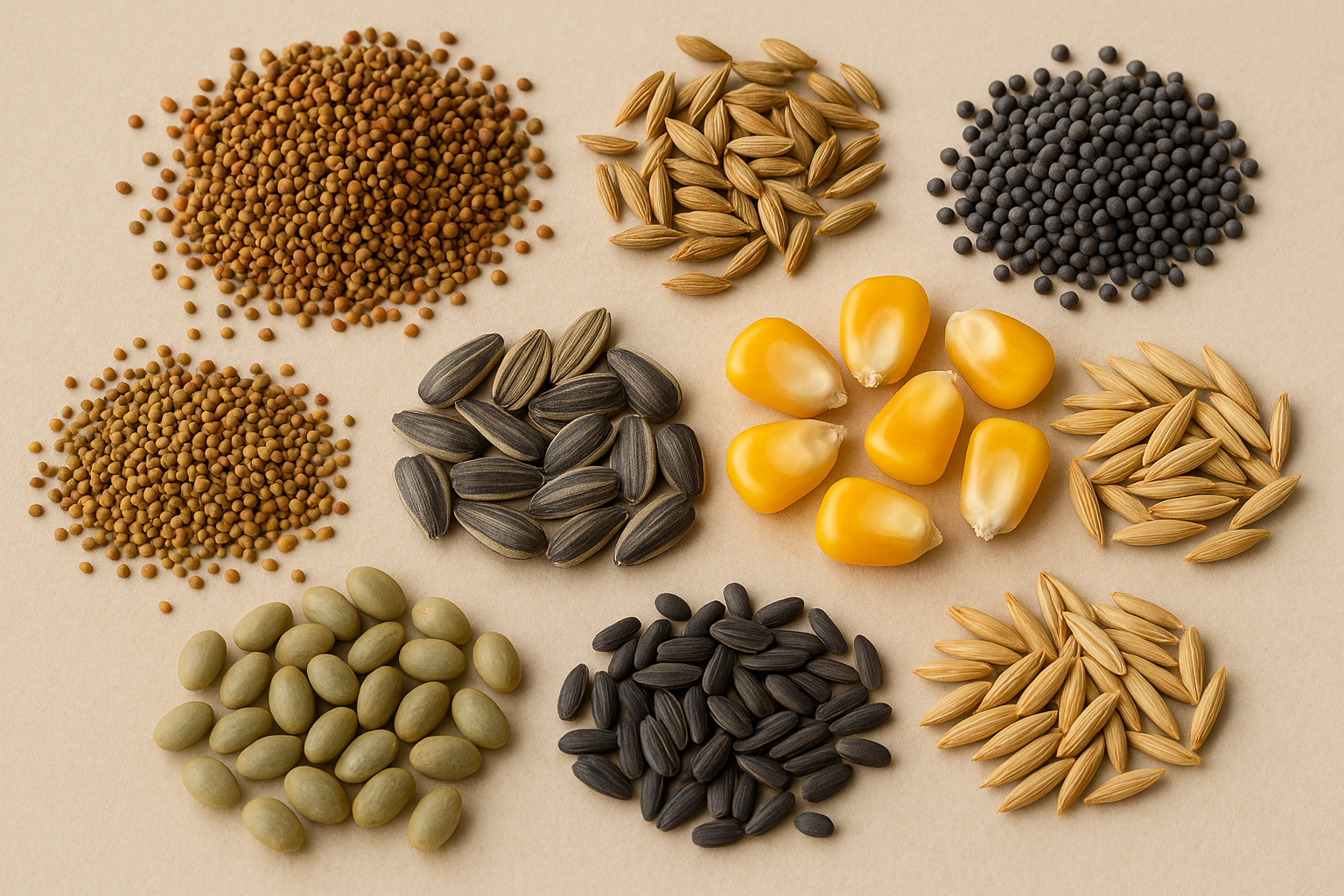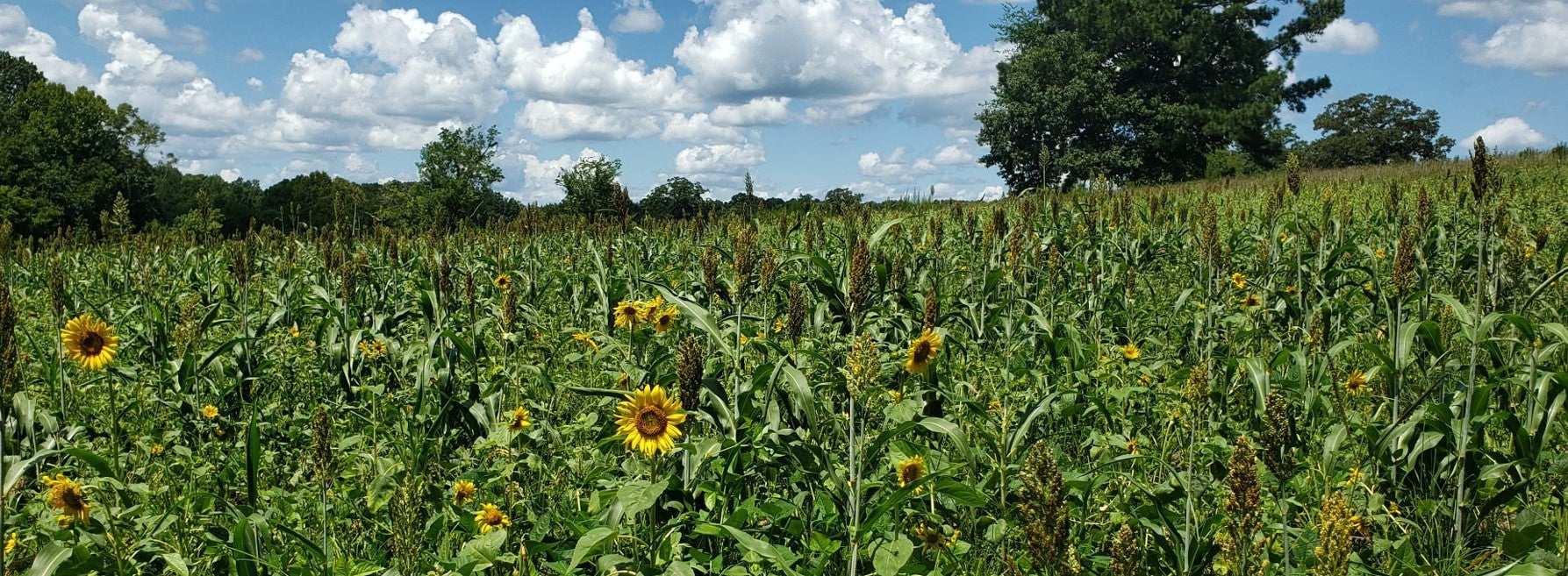Rattling 101 - Part III
Wham! I hit the shed antlers together as hard as I could and then quickly pulled them apart. Again, I slammed the antlers together with all of my force. This time I kept the antlers entwined and twisted the tines and beams against each other for several seconds. I repeated this several times. Two minutes into the rattling sequence I noticed movement and a flash of gray out in front of me.
The deer stopped out of sight behind a thick clump of mesquite trees. I continued to rattle, but tried to shield all of my movements from the deer. After several anxious moments, the deer stepped into view. His rack was huge. The main beams were over 20 inches apart and carried 11 typical points. The tines were also very tall and symmetrical. The only flaw, if there was one, was his lack of mass.
The buck had been earlier sighted and photographed during the fall deer survey. Based on these photographs and my sighting, we estimated the buck's gross Boone and Crockett score to be in the 160's. The only reason this buck was still alive was because of his age - he was only 4.5-years-old!
A Second Antler Rattling Study
The second portion of our rattling study was to rattle to specific radio-collared bucks and then measure their individual responses to the rattling. Each of the 130 collared bucks had a transmitter attached to its collar that produced a signal at a unique radio frequency. We tracked the movements of these bucks during all hours of the day and all months of the year by using telemetry. We attempted to locate each buck 1-2 times per day.
Forty-three of the 130 bucks that we had captured and radio-collared, had received special, activity-sensing radio transmitters. These unique transmitters allowed us to tell if the bucks were bedded or active each time the bucks were located, without ever being able to see the bucks. Each of these collars produced a radio signal at a rate of one pulse per second - if the buck was not moving and the collar around its neck was stationary. However, when the buck moved, the collar also moved. This movement caused the radio signal to change to two or more pulses per second. Therefore, each time that we located one of these bucks, we could tell if the buck was bedded and not moving, or active, by the pulse rate.
I had earlier used radio telemetry to map the location of buck #180. Once I determined the buck's location, I drove downwind and parked the truck. I carefully and quietly walked toward the buck, until I felt I was within 200-300 yards. Once in position, I turned the receiver on and pointed the antenna in the direction of the buck. The telemetry equipment allowed me to listen to the buck as I rattled to him. I could then tell how the buck reacted to the rattling based on the pulse rate of the signal. After turning on the equipment, I began the rattling sequence mentioned at the beginning of this article.
The signal coming from the radio transmitter on buck #180, who was one of 130 different bucks that we had captured and equipped with radio transmitting collars since my research started in 1992. We captured this buck in October of that year. At that time, we estimated the buck's age at 2.5-years-old. In 1992 this buck had a gross B&C score of 89, with seven points and no brow tines.
Number 180 became active almost immediately after I hit the shed antlers together. As I continued to rattle, the pulse rate quickened even more and the signal became louder. Based on this information, I knew that the buck was active and that he was moving toward me. One minute into the sequence the signal became so loud that I knew the buck would appear at any moment!
Almost as soon as the buck stepped into the opening, he turned and disappeared back into the brush. I gathered up the telemetry equipment and returned to the truck. Once at the truck I waited 30 minutes and re-located the buck by taking three new compass bearings. Based upon this second location I was able to determine how far, and in what direction, the buck traveled after he responded to the rattling.
We were able to rattle to specific bucks and measure their individual responses. We were also able to tell whether or not each buck responded to our rattling, even if the buck did not move close enough for us to see him. Lastly, we were able to measure response rates to rattling based on the gross B&C scores of each buck and the ages as determined by tooth wear.
The Results
The results of this second part of our rattling study were very interesting. We located 18 different bucks during the fall of 1994-96. All 18 bucks were previously collared with the special activity-sensing radio transmitters. After locating each buck, we quietly walked to within 200-300 yards of the buck and performed the "long and loud" rattling sequence. Thirty-three different rattling sessions were performed near the 18 different bucks. We located and rattled to five bucks during pre-rut, 14 bucks during rut peak, and 14 bucks during post-rut.
Twenty-four of the 33 rattling sessions (73 percent) resulted in bucks responding to our rattling by becoming active and moving closer to the person rattling. This indicated that nearly three out of four bucks respond to rattling when they are upwind and within hearing range! Most hunters probably would not have predicted that buck response rates are that high.
Only one person at ground level, thus reducing the number of buck sighted to 33 percent, performed all rattling during this second study. The 33 percent sighting rate compared favorably with the 43 percent sighting rate from our first study at the Welder Refuge.
Once again, this shows how important it is for the hunter to get elevated. The best way to accomplish this is to rattle with a partner. One person should stay at ground level and rattle. Climbing into a tripod or some other type of stand should elevate the second hunter. Stand sites should be selected upwind of open areas to further increase the number of bucks seen because most bucks respond from downwind.
Buck responses tended to be lower during the pre-rut than during the rut peak and post-rut periods. During the pre-rut, two of five (40 percent) rattling sessions resulted in the buck becoming active and moving closer to the person rattling. During the rut peak, 11 of 14 (79 percent) bucks became active and moved closer and during the post-rut 11 of 14 (79 percent) bucks became active and moved closer. The response rate during the rut peak was slightly lower than what we observed during the first part of the study at the Welder Refuge, while the post-rut response rate was higher.
Buck responses were highest during morning rattling sessions. Response rates during midday and afternoon were identical, although slightly lower than morning response rates. During the morning sessions, eight radio-collared bucks responded to the nine rattling sessions (89 percent). During midday, six bucks responded to the nine rattling sessions (67 percent) and during afternoon, 10 bucks responded to the 15 rattling sessions (67 percent). Midday buck response rates during this second study were higher than response rates measured during the first study at the Welder Refuge.
During nine sessions, bucks either did not respond at all, or else they became active but moved away from the person rattling. The average age for bucks that did not respond to the rattling was 7.4 years, while the average age of bucks that did respond was 5.8 years. This indicates that older bucks may be less likely to respond to rattling.
The average distance that each buck moved 30 minutes after responding to the rattling was almost one-third of a mile. After responding to our rattling 73 percent of the bucks moved to an area upwind of their initial location, although we rattled downwind from these bucks. In other words, the typical behavior was for the buck to first move downwind toward the rattling. After responding to the rattling, bucks moved back upwind beyond the area of their initial location. Buck movements away from the rattling site were highest during the post-rut and lowest during the pre-rut.
We rattled to 11 different bucks more than once to determine if bucks learned to avoid rattling. In every case but four, bucks responded during the second, third, or fourth rattling session in the same way that they had responded during the first session. The exceptions were four bucks that did not respond during the initial rattling session, but did respond during the second session. We rattled to buck #1940, a 6.5-year-old buck during the first year of the study, four different times. He responded by becoming active and moving closer to us all four times. These results seem to indicate that bucks will continue to respond to rattling, even if they have already responded to a previous rattling session.
I found some surprising results when I analyzed the data based on each buck's known gross B&C score. Most hunters would guess that trophy bucks are less likely to respond to rattling. In our study we found the opposite to be true. I separated the bucks into two groups. One group included all bucks with gross B&C scores less than 130 points. We called this group the "cull" group. In the other group were all of the bucks with gross scores of 130 or above, called the "trophy" group. Sixty-seven percent of the trophy bucks responded to our rattling while only 50 percent of the cull bucks responded to our rattling. Furthermore, bucks in the cull group moved, on average, nearly two and half times further between pre- and post-rattling locations than bucks in the trophy group!
Results Should Improve Your Hunting Success
We hope that hunters will use the results of our research to increase their success and time spent afield this upcoming fall. Rattling is, without a doubt, the most exciting deer hunting technique. There is little that compares to the sight of a big racked, mature buck rushing into view in response to rattling. Or, the sight of two bucks that not only respond but then begin to spar with each other. The rush of adrenalin that occurs with each buck response never fades.
Join me next week for the three-part story on the legendary Huisache Buck.
Posted by Dr. Mickey W. Hellickson











Leave a comment